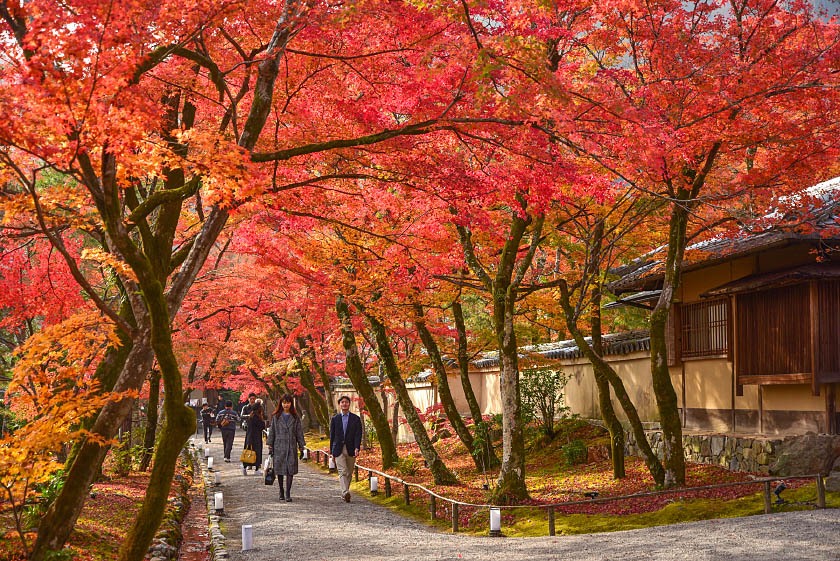Koyo (紅葉; colourful leaves) refers to the vibrant colours of leaves in autumn. Across Japan, people can be seen amongst the trees and enjoying their beauty. Although less known as the more famous changing of seasons, Hanami, Koyo is nonetheless still enjoyed by natives and visitors alike. Every year, the koyo front travels south from Hokkaido in late October, turning leaves all sorts of wondrous colours all the way down through Japan to the south of Kyushu by early December. Do not forget to buy your Japan Rail Pass in order to enjoy the wonderful autumn landscapes in a simple, efficient and affordable way.
Leaf Hunting
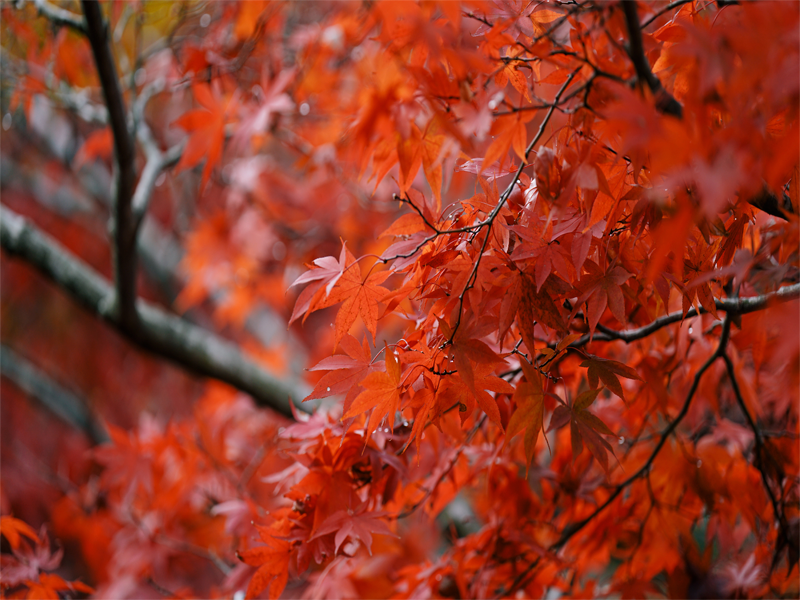
The name for looking at leaves during koyo is momijigari (紅葉狩り; autumn leaf hunting). Although nowadays it mainly relates to observing the autumn leaves, historically and to some extent still today it referred to autumn foraging and hunting.
Preparing for Kōyō
The most important part of preparing for koyo is to look at the koyo front forecast for the year and region you will be visiting. When planning a trip to partake in momijigari, it is essential to get the timing correct. Book the trip a month too early or too late may scupper your plans entirely.
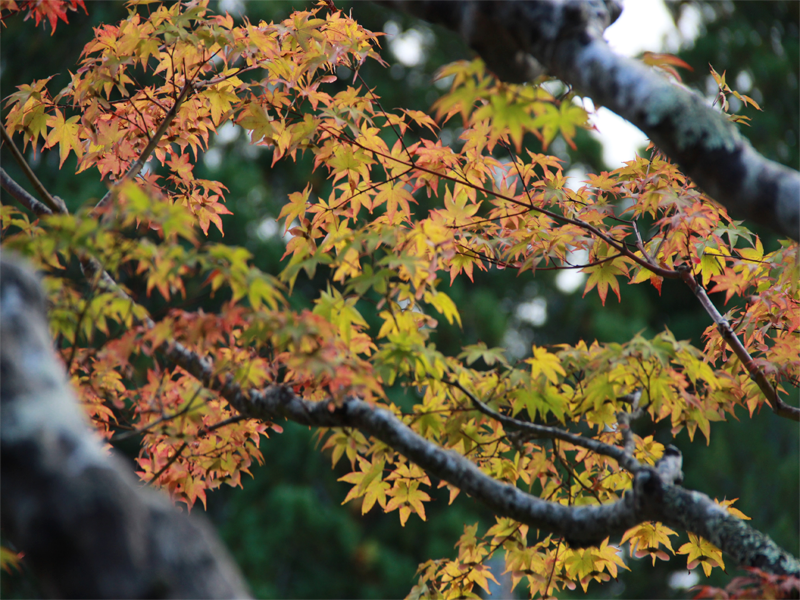
Once you are in Japan, there are some important steps to take to enjoy koyo. First of all, it is essential that you wrap up warm. Japan’s autumns are mild during the daytime, but can become quite cold towards the evening – and you will likely be outside until the evening – so make sure you have a coat, some gloves and a scarf to put on when it starts to get a bit cool. Check the weather forecasts too; while Japan is often dry in the autumn, rain, snow or even typhoons can strike. Make sure that the weather will be as settled and dry as possible before you set off to enjoy koyo on that day. It is alright to push your planned momijigari day back if it means going on a sunny day rather than a rainy one.
As for what to do while enjoying koyo, many people like to bring a camera or use their phone to take photos and videos of the trees. Make sure your battery is fully charged and you have plenty of storage on whichever devices you may use. You may want to invest in a portable phone charger too so that you don’t have to worry about draining your phone’s battery too early in the day.
Beautiful Places
There are so many places to admire the beauty of koyo that there would be too many to list. However, there are some highlights. A very popular place to visit is Nikko National Park, especially by Kegon Falls. Here you can lose yourself in the colourful forest, with the roar of the waterfall only adding to the experience. Another national park, Momijidani-Kōen near Hiroshima, is full of maple trees which turn bright red during koyo season. There is also a shrine nearby – Itsukushima-jinja – as well as the sacred Mt Misen which are both extremely photogenic. Finally, Shirakami-Sanchi forest in Tohōku has a breathtaking combination of ancient woods, gushing waterfalls and bustling wildlife which makes koyo season particularly special there.
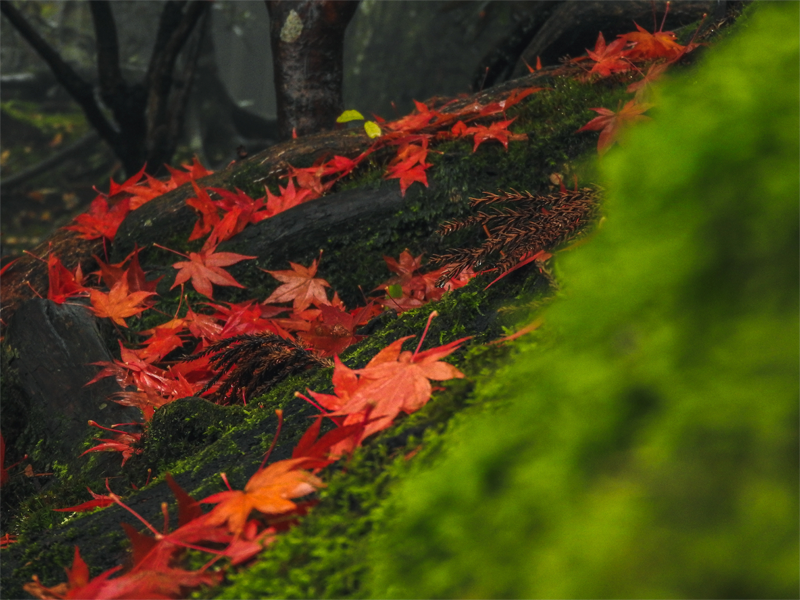
If the small town atmosphere is more your style, then taking the Odawara-to-Hakone train in Kanagawa Prefecture will give you a scenic ride through the red and gold forests. Hakone at the end of the route is a rural town not too far from Mt Fuji and is known for its natural beauty and its onsens. Another village good for momijigari is Shirakawa-gō in Gifu, which offers rich autumnal sights amongst rustic cabins and farmland. This historic farming village is a World Heritage Site and gives visitors an insight of traditional Japanese living. Purchasing the Japan Rail pass ensures the most comfortable way to admire it during the fall without missing the best places to admire the beautiful color of the leaves.
Momijigari in the Mountains
Japan’s mountains are a wonderful place to observe koyo as you can climb the mountains and get a scenic view of autumn leaves for miles around, or you can get a wonderful view of peaks poking out from the trees should you remain on the ground. The dense forests at the base of Mt Fuji provide a spectacular show of fiery autumn leaves. This really brings out the beauty of Japan’s most iconic natural landmark, creating a colourful accent to the grey and white of the snowy peak. Chūbu-Sangaku National Park in central Honshū features the Northern Alps and Kamikōchi Valley. This is another beautiful location for momijigari, as it contains a mix of snowy mountains, placid waters and vibrant woodlands.
Travelling further north, Daisetsuzan National Park in central Hokkaido has a breathtaking combination of autumn leaves and snowy mountains. The wildlife here is spectacular and the terrain perfect for hikers. You can also take a train to the summit of Mount Akadake if you don’t feel like hiking there, where you can enjoy a panorama of golden and red trees. This is also one of the first places where the koyo front begins every year, so it is an extra special location to watch the leaves change.
Urban Kōyō
Even if you can’t or don’t want to leave the big city, you can still enjoy the beauty of koyo. In central Tokyo lies Shinjuku Gyo-en, a huge park popular for both hanami and momijigari. If you don’t want to stray too far from the bustle of the city, this park has you covered. The contrast between the vibrant leaves and the skyscrapers in the background makes for some very interesting photos. The park has a very romantic feel during this time too. Kyoto’s many temples and shrines are also amazing places to get into the koyo spirit; examples of striking locations include Kodaiji Temple, Kitano Tenmangu, Tofukuji Temple and Kiyomizudera. In Fukuoka, the areas around Fukuoka Castle and the traditional Rakusuien gardens are both ideal places for momijigari.
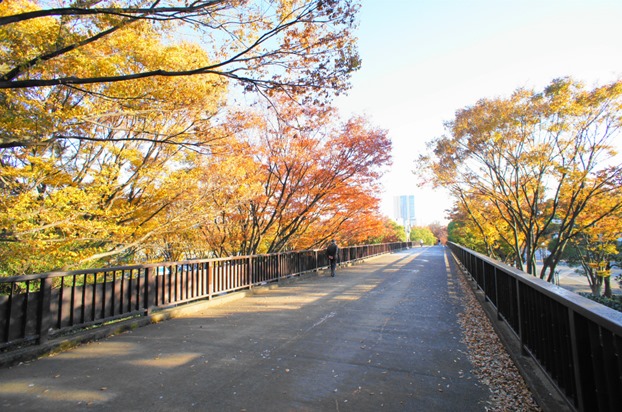
Koyo season and momijigari are a special event for any tourist visiting Japan during the autumn months. The colours of koyo turn the already beautiful woodlands of this nation into something even more special, so if you’re visiting Japan in the autumn it is a very good idea to grab your coats and cameras ready and join thousands of others in momijigari. To be able to enjoy the maximum of places where you can see the Kōyō, we will do well to get a Japan Rail Pass before the trip!

